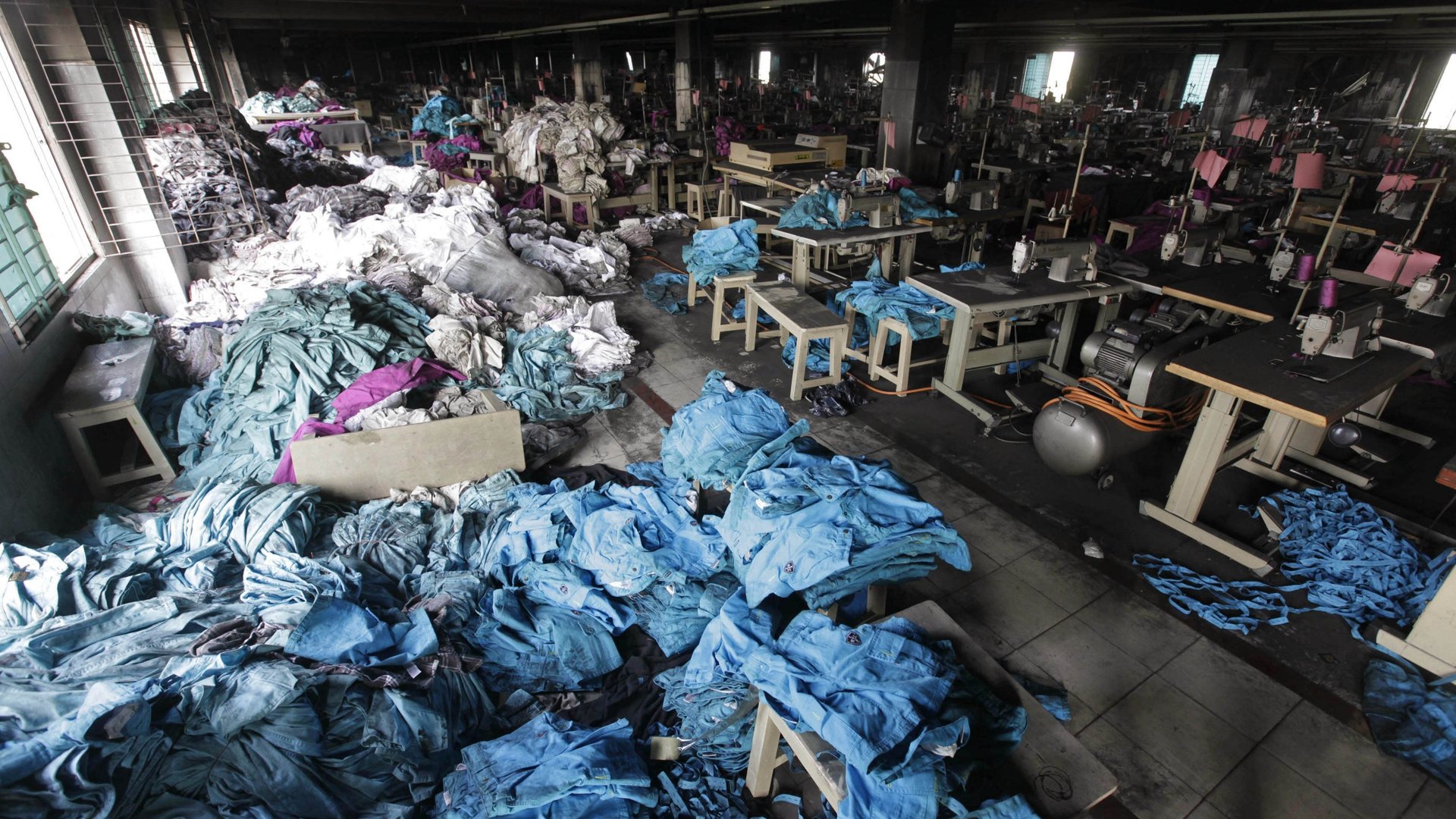There are 16 million slaves around the world making our stuff
Slavery has been illegal worldwide for just about four decades, since Mauritania finally abolished it in 1981.


Slavery has been illegal worldwide for just about four decades, since Mauritania finally abolished it in 1981.
But slavery didn’t end there. According to the latest report by the Walk Free Initiative, presented today (July 17) at the UN Headquarters in New York, there were 40.3 million people living in conditions of slavery in 2018, most of them women.
There isn’t an official legal definition of modern slavery, but the UN describes it as the condition of people whose work “is performed involuntarily and under the menace of any penalty.” Modern slaves can be coerced to work through explicit measures like violence, but also through subtler means like financial pressure, or by limiting someone’s movement by retaining their identification.
While it’s easy to believe that slavery is limited to poor or underdeveloped countries, or countries with a questionable human rights record, it is actually happening everywhere. Recently, for example, there was two cases where diplomats kept staff in their US residencies who were working in conditions of slavery.
The UN and its member states committed to eliminating slavery by 2030, along with human trafficking, forced labor, and child labor. The commitments are part of the UN’s sustainable development goals—a set of ideals the world’s governments pledged to tackle in 2015.
But progress has been little, and slow. According to the report, which surveyed 183 countries (out of 193 UN member states), only 31 countries have ratified the UN-developed protocol on forced labor, a legal framework for countries to identify and target exploitation. The US and many European countries are among those that have yet to ratify it, and all over the world there is a lack of procedures to identify victims of slavery, or provide the support they require.
One area is especially problematic: Business supply chains.
Katharine Bryant, the manager of global research for Walk Free, the anti-slavery organization that published the report, told Quartz that some 16 million victims of slavery work within poorly-monitored supply chains. And that doesn’t include child labor, or exploitative work conditions that don’t limit the freedom of movement.
Fewer than 40 of the countries surveyed have systems and laws in place to prevent businesses from buying products that may have relied on slave labor somewhere along the line of production, and even then the ones that do have laws fail to enforce them effectively. Global circulation of goods makes it extraordinarily challenging to ensure products are slave-labor free because it’s hard to track whether, for example, the components of an item assembled in the US are all made without the use of slave labor somewhere else.
Many countries that supply consumer goods have high percentages of people working in conditions of slavery, enduring long shifts and exhausting conditions without the choice to leave. The fashion industry is notoriously marred by the use of forced labor. So is the tech sector, where companies often fail to monitor the supply chains of the components in their products.
There are some laws aimed at addressing this: A model one is in California, where all companies with revenues above $100 million are required to disclose their efforts to fight slavery through checking their supply chains. However, this still leaves out smaller companies, and the law is so far limited to just the one US state.
The US was one of the first countries to acknowledge the problem of modern slavery in the supply chain of private business and passed laws to address it during the Obama administration, Bryant said. But while the supply chain of American-made goods can usually be verified, the report found that the US actually imports the largest volume of goods that are made with slave labor at some point before it reaches the consumer.
This reality does not take into account the labor practices that don’t strictly fall under the definition of slavery, but are still deeply questionable. “Labor exploitation is a spectrum,” said Bryant, who said the more nuanced the abusive practice, the harder it is to define and control it.
Some countries have had more success fighting slavery and forced labor than others. Australia, for instance, passed a law in 2018 that requires all businesses with more than 36 employees to report on the condition of the workforce, as well as their supply chain. Still, these efforts are yet too isolated, and the law has limited ability to enforce regulations without the cooperation and engagement of the private sector, Bryant said.
Even when the businesses are on board and the legal framework is in place, there is still another important piece missing: Education. Promoting human rights education among people at risk of exploitation—for instance, in communities of migrant workers, or where forced marriages are common practices—is an important step to undertake because large parts of the global population aren’t aware of their rights.
“We see cases where people have been exploited and didn’t realize they were in slavery conditions,” Bryant said.